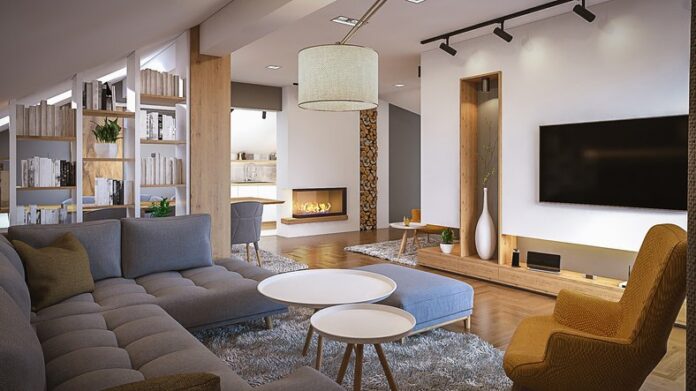[ad_1]

Whether you are picking out lamps for your living room, selecting track lighting for your kitchen, or designing a lighting plan for an open office, you need to ask yourself the same basic question: how can I quantify or measure the amount of light I need?
How to Measure Light
So, how is light measured? A handy way to think about measuring lighting is to think in terms of producing and receiving light. The light produced by a fixture is generally measured in lumens (abbreviated as lm). More lumens means that the fixture will be brighter.
When considering how many lumens you need for your space, keep in mind that one lumen is equal to the amount of light produced by one candle. Although it may seem strange that we use the light output of one candle to quantify the light produced by an LED, remember that we use the power of a horse to measure the engine performance of a Ferrari!
If you are buying a recessed can light or an LED bulb for a table lamp, you can easily tell how much light each produces by looking for the lumen information. If the light produces 800 lumens, then it is providing the equivalent of 800 candles…but without the pesky risk of fire!
Lumen vs. Footcandle
Remember when we said that it’s a good idea to think of measuring light in terms of producing and receiving? Well, so far we have talked about measuring the light produced, but now we will look at measuring the amount of light received. When a bulb produces 800 lumens, those lumens are not all going to the same place. To reliably measure the amount of light that is received, we use the footcandle. The footcandle is the amount of light that one square foot receives from one candle from a distance of one foot.
Now that you have a unit of measure to compare various light fixtures, and you know the difference between a lumen and a footcandle, you can start to address the question of how much light you need. As you can probably guess, the answer will largely depend on what the space is used for. If you are lighting a Zen meditation room, the amount of light you need will likely be much less than if you are lighting a workshop.

Easy-to-Use Lighting Layout Tool Takes Guesswork Out of Illuminating Your Space
Not only is getting the right amount of light important for matching the space you use, but there are also regulations that need to be followed. OSHA (Occupational Safety and Health Administration) has specific guidelines that specify the lighting requirements based on the space used in the workplace, so it is especially important to accurately assess the lighting needs. Check out the easy-to-use Lighting Layout Tool from 1000Bulbs that allows you to calculate the number of fixtures needed for any commercial product that has an IES file available.
Now that you know how to calculate the right light quickly, accurately, and easily for your space, you’re ready to go! If you still need a helping hand to walk you through a project, the 1000Bulbs team is ready for you. Call 1-800-624-488 or try our convenient pop-up chat feature at the bottom right corner of our web pages.
[ad_2]
blog.1000bulbs.com










